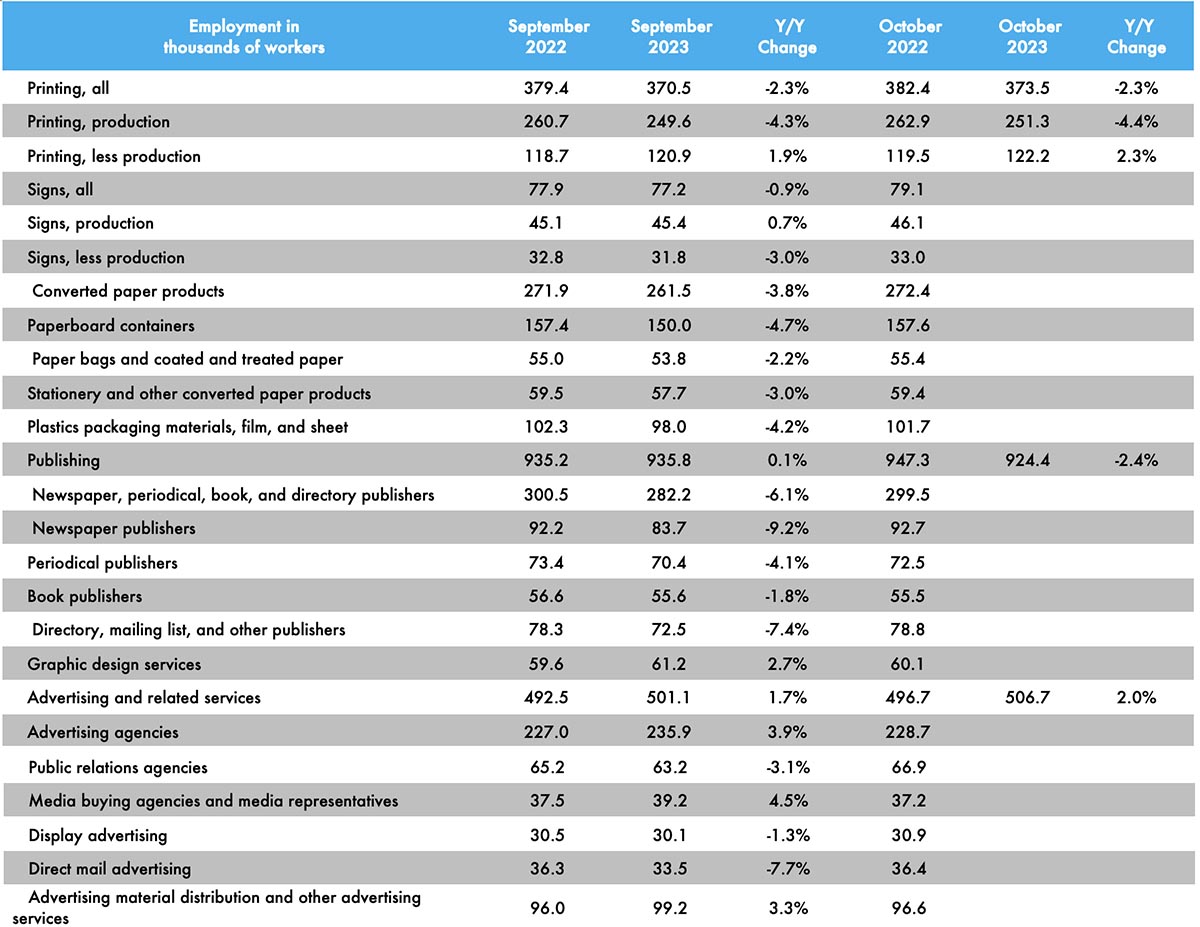
The printing employment situation was pretty flat throughout the summer, and come fall it’s starting to pick up—ever so slightly. Overall printing employment in October 2023 was up 0.8% from September and, drilling into carpeted/non-carpeted areas, production employment was up 0.7% while non-production employment was up 1.1%.
In terms of publishing, overall publishing employment was down 1.2% from September to October, while advertising and related services was up 1.1%.
Earlier this year, we started adding a number of other business categories to our employment table, the reporting of which, as you may recall from our tracking of the publishing and creative markets, lags a month.
Overall employment in the signage industry was up 1.2% from August to September, with sign production employment up 2.6%. (Non-production was down 0.9%.)
Converted paper products employment was down 0.8% from August to September, with paperboard container employment down 1.0% and paper bags and coated and treated paper employment unchanged.
Looking at some specific publishing and creative segments, from August to September, periodical publishing employment was up 0.3%, while newspaper publishing employment was up 1.7% and book publishing up 1.3%. Graphic design employment was up 1.3%. Ad agency employment was down -0.8%, and PR agencies were up 1.1%. Direct mail advertising employment was down 1.5%.
So employment was generally up, but not by a whole heck of a lot.
As for October employment in general, the BLS reported on November 3 that total nonfarm payroll employment increased by 150,000 in September, and the unemployment rate ticked up to 3.9%. Meanwhile, change in total nonfarm payroll employment for August was revised down by 62,000 (from 227,000 to 165,000) and the change for September was revised down by 39,000 (from 336,000 to 297,000.) The U-6 rate (the so-called “real” unemployment rate which includes not just those currently unemployed but also those who are underemployed, marginally attached to the workforce, and have given up looking for work) ticked up from 7.0% to 7.2%.
The labor force participation rate decreased from 62.8% in September to 62.7% in October and the employment-to-population ratio decreased from 60.4% to 60.2%. The labor force participation rate for 24–54-year-olds also ticked down from 83.5% to 83.3%.
Not a great employment report and below what economists expected—especially after the blockbuster Q3 GDP report. (The autoworkers’ strikes also played a role and we will likely see employment back up in the November report.)














